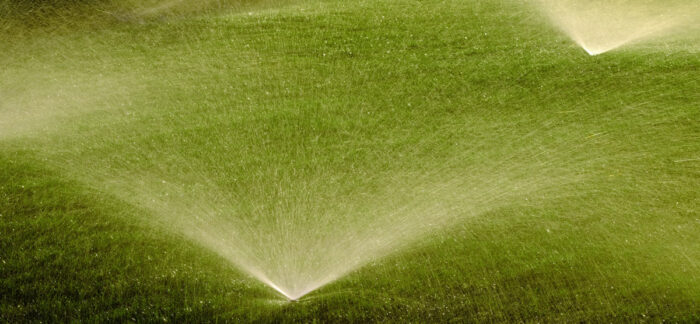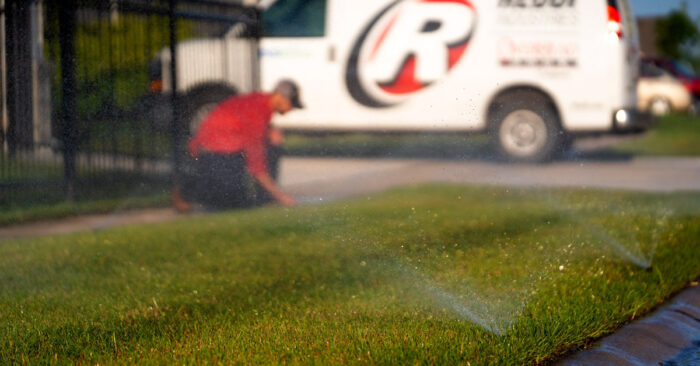Watering Tips – How Much to Water Your Lawn in Central Kansas
Here are a few guidelines to help you determine when, how often, and how long to water your lawn in the Wichita area.
Wichita Lawns Need 1-2 inches of Water Per Week
The best method is to water deeply two to three times each week, with a day off between each watering.
If you’re not sure how much water your sprinklers put out, place a few jars/cans or rain gauges in a sprinkler zone, start a timer and run the zone until 1/2 inch of water is collected. Do this for each zone, as they are likely to be different. You can then set your irrigation timer correctly for each zone.
Early Morning is Best
The cooler morning temperatures mean less evaporation, and it’s usually not as windy. Watering efficiently will reduce waste and lower your water bill.
Don’t Water Every Day
According to the Sedgwick County Extension Office, watering every day is not necessary. Unless you have a newly seeded lawn or new sod, your lawn needs 1-2 inches of water per week. Having off-days allows your grass roots time to strength and reach for water deeper in the soil. During peak summer months it may be necessary to increase the frequency if conditions are particularly hot and dry.

How Do You Know When Your Lawn Needs More Water?
They key to conserving water while developing strong roots is to let it dry out some, just not to the point you’re are damaging the grass.
If you walk across your lawn and the grass blades bounce back quickly, it is healthy. If the grass remains flat, it may need water. Also, wilting blades and dramatic colors changes (from green to dark blue color, brown or white) is also a sign of inadequate water.
Encourage Deep Root Growth
By waiting until the top 2-3 inches of soil is starting dry, your grass will be forced to send roots deep into the soil to look for water. This will enable your lawn to withstand hotter, drier weather with less watering.
Signs Your Lawn is Getting Too Much Water
Too much water wastes water and can cause other problems.
If you see lots of runoff when you water (water leaking from the turf down sidewalks and driveways), the lawn is saturated and can’t absorb anymore water.
Some weeds thrive in over watered lawns. If you’re seeing lots of weeds, you may need to adjust your watering schedule. Mushrooms also grow in overly damp lawns.
Water in Short Cycles
It takes time for soil to absorb water. Much of the Wichita area has clay soil, it can take an hour for a quarter of an inch of water to soak into clay. So, if your sprinklers are putting down an inch of water in an hour, most of it is wasted. A looser sandy soil can absorb 2 inches of water an hour, so you can water a little more at a time.
The solution? Water in several short sessions, rather than one long session. If you water about a quarter of an inch at a time, with an hour break in between, even clay soil will have time to soak in all the water. This method of watering is known as soak and cycle.
Using Rain Sensors
Turning your sprinklers on and off manually, working around weather conditions can lead to incorrect watering. Consider installing a rain sensor. This device will monitor the weather conditions and automatically adjust your systems run times depending on rain and other factors.

We do our best to provide current and accurate information, but this content could contain errors or information that is not correct for your situation or equipment. Resources found on our website are provided as general information. Reddi Industries does not assume any liability resulting from the provided information. Always consult your product manuals, and only perform work if you are qualified.
